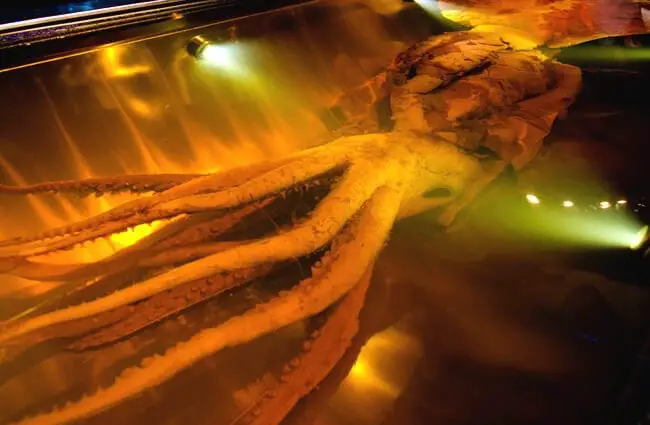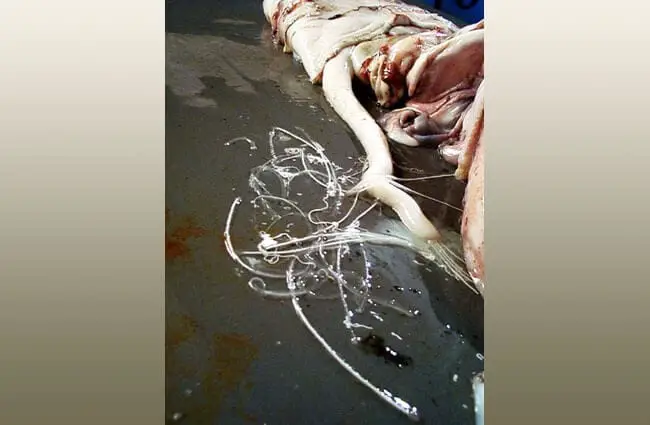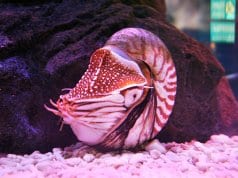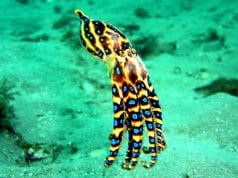The Enigmatic Giant Squid: A Deep Dive into the Ocean’s Mysterious Colossus
For centuries, tales of colossal sea monsters have captivated imaginations and fueled nautical legends. While many such stories proved to be fanciful, one creature has consistently surfaced—the giant squid. Architeuthis dux, as it is scientifically known, remains one of the most elusive and fascinating creatures in the ocean, a true testament to the wonders hidden within the deep. This article unravels the mysteries surrounding this magnificent cephalopod, exploring its biology, habitat, behavior, and its place in both the marine ecosystem and human culture.

Basic Biology and Physical Characteristics
The giant squid is, as its name suggests, enormous. Individuals can reach lengths exceeding 43 feet, with females generally larger than males. Most of this length is comprised of the tentacles, which are used for capturing prey. The mantle, the main body of the squid, is muscular and streamlined, providing propulsion through the water. Like all cephalopods, giant squids possess a beak, similar to a parrot’s, used to tear apart food. Perhaps the most remarkable feature is its eyes—the largest in the animal kingdom. These enormous eyes, reaching up to 10 inches in diameter, are adapted to detect even the faintest bioluminescence in the dark depths.
Anatomy and Key Features
- Mantle: The muscular main body, housing vital organs.
- Tentacles & Arms: Eight arms and two longer tentacles used for hunting.
- Beak: A sharp, parrot-like beak for tearing prey.
- Eyes: The largest eyes in the animal kingdom, optimized for low light conditions.
- Siphon: Used for jet propulsion and waste expulsion.
Habitat and Distribution
Giant squids are found in all of the world’s oceans, but they are most commonly observed in the temperate and subtropical waters of the Atlantic and Pacific Oceans. They typically inhabit depths between 980 and 3,280 feet, although they can venture into shallower and deeper waters. Their distribution is closely linked to the presence of sperm whales, their primary predators, and the distribution of their prey, such as deep‑sea fish and other squid species.
Preferred Environments
- Depth: Typically found between 980 and 3,280 feet.
- Temperature: Temperate and subtropical waters.
- Ocean Basins: Atlantic and Pacific Oceans are prime habitats.
Diet and Hunting Strategies
Giant squids are active predators, feeding on a variety of deep‑sea creatures. Their diet consists primarily of fish such as lanternfish and hatchetfish, and other squid species. They use their tentacles to capture prey, often ambushing from the darkness. The suckers on their arms and tentacles are lined with sharp, toothed rings, ensuring a firm grip. They are known to engage in battles with sperm whales, sometimes leaving scars on the whales’ bodies as evidence of these encounters.
Reproduction and Life Cycle
Much about the reproduction of giant squids remains a mystery, as observing these creatures in their natural habitat is incredibly challenging. It is believed that mating occurs in deep water, and females lay vast numbers of eggs. A single female can lay an estimated several million eggs, but little is known about the incubation process or the survival rate of the young. The lifespan of a giant squid is also unknown, but estimates suggest they may live for only a few years.

Key Reproductive Facts
- Mating: Occurs in deep water, details largely unknown.
- Eggs: Females lay millions of eggs.
- Lifespan: Estimated to be relatively short, likely a few years.
Ecological Role and Interactions
Giant squids play a crucial role in the deep‑sea ecosystem. As apex predators, they help regulate populations of fish and other squid species. They also serve as a food source for sperm whales, which are among the few animals capable of preying on these massive cephalopods. Their presence contributes to the overall biodiversity and health of the deep‑sea environment.
Giant Squid and Human Culture
For centuries, giant squids have captivated the human imagination. They appear in numerous myths and legends, often depicted as monstrous creatures lurking in the depths. Tales of encounters with giant squids have inspired countless works of literature, art, and film. In recent years, increased scientific research has shed light on the biology of these creatures, transforming them from mythical monsters into fascinating subjects of scientific study.
Encountering a Giant Squid: What to Do?
An encounter with a giant squid is exceptionally rare. If, by some chance, you were to encounter one, it is crucial to maintain a safe distance. These are powerful animals, and while they are not inherently aggressive towards humans, they may defend themselves if threatened. Avoid shining bright lights at the squid, as this could disorient it. The most important thing is to observe from a respectful distance and avoid any actions that could provoke it.
Giant Squid in Captivity: Zookeeper Considerations
Maintaining a giant squid in captivity is extremely challenging, and currently there are no successful long‑term captive displays. Their size, deep‑sea habitat requirements, and delicate physiology make them ill‑suited for traditional aquarium environments. However, if a squid were to be temporarily held in captivity for research purposes, several key considerations would be essential. A massive tank with carefully controlled temperature, salinity, and oxygen levels would be required. Providing a suitable diet of fresh fish and squid would also be crucial. It is important to minimize stress and provide a dark, quiet environment to replicate their natural habitat. Regular monitoring of their health and behavior would be essential to ensure their well‑being.
Evolutionary History
The evolutionary history of giant squids is a topic of ongoing research. Fossil evidence suggests that cephalopods have existed for over 500 million years, but the origins of the giant squid lineage are less clear. It is believed that they evolved from smaller squid species, gradually increasing in size over millions of years. The development of their enormous eyes is thought to have been driven by the need to detect bioluminescence in the dark depths. The extreme size of giant squids is likely a result of evolutionary pressures to compete for resources and avoid predation.

Interesting Facts
- Size: Can reach lengths exceeding 43 feet.
- Eyes: Possess the largest eyes in the animal kingdom, up to 10 inches in diameter.
- Beak: Their beak is incredibly strong and sharp, capable of tearing through flesh and bone.
- Suckers: The suckers on their arms and tentacles are lined with sharp, toothed rings.
- Spermatophores: Male giant squids use long, ribbon‑like structures called spermatophores to deliver sperm to the female.
- Bioluminescence: Giant squids may use bioluminescence for communication or to attract prey.
- Predators: Sperm whales are their primary predators.
- Habitat: Found in all of the world’s oceans, but most commonly in temperate and subtropical waters.
The giant squid remains one of the most enigmatic and fascinating creatures in the ocean. Despite centuries of study, much about its biology, behavior, and life cycle remains a mystery. As technology advances and our understanding of the deep sea grows, we can expect to uncover even more secrets about this magnificent colossus of the deep.




![Red Angus Closeup of a beautiful Red Angus cowPhoto by: U.S. Department of Agriculture [pubic domain]https://creativecommons.org/licenses/by/2.0/](https://animals.net/wp-content/uploads/2020/03/Red-Angus-4-100x75.jpg)

